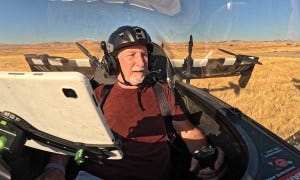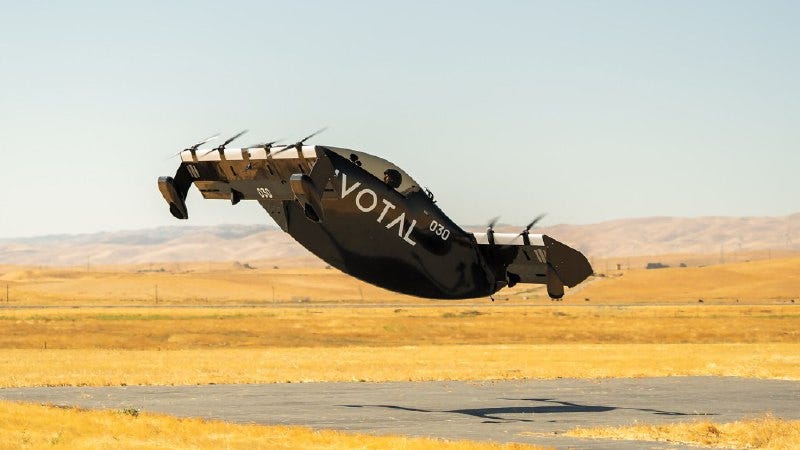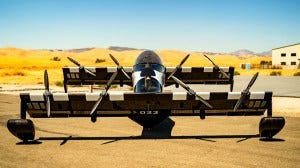I Learned How to Fly This Electric Aircraft in a Week—and I Didn’t Need a License
Pivotal’s BlackFly ultralight eVTOL is part of a growing new segment in recreational flying—one that doesn't require a pilot's license to fly. Aviation editor Michael Verdon went to California for a s
By Michael Verdon
Soaring a couple hundred feet off the ground, alone in a small aircraft with no piloting experience, sounds like a nightmare to some. But to me, flying solo has been a fantasy since a young Tom Cruise conquered the skies in an F-14.
Pivotal, and a half-dozen competitors in the emerging eVTOL space, have created one-seat, electric aircraft to release your inner Maverick, with no formal flight training.
But the Silicon Valley company’s 10-day program for owners, pilot or not, is a mandatory part of the purchase agreement. It involves about 40 hours of flight training in a simulator, basically so you can prove you know the one-person aircraft well enough to fly it. That’s followed by 10 real flights.
The BlackFly (pre-production version of the Helix that I trained in and flew) has been around for 14 years, though it’s a much different aircraft than the garage-built plane Marcus Leng first flew in 2011 to prove an affordable, everyman electric plane could change the face of aviation.
At a summer barbecue, the Canadian inventor strapped himself into a 14-foot-long, two-wing oval contraption, telling guests they might want to stand behind their cars. He throttled up the electric engines and took off, careening wildly 10 feet above the yard, wingtips taking divots out of the grass. But the odd-duck aircraft stayed aloft, proving the concept.
Leng forged ahead. Four iterations, 7,000 piloted flights and 40,000 flight miles later, the BlackFly has transitioned to the production-ready Helix, with a $190,000 base price, similar to a Lamborghini Huracan—though the Lambo can’t fly over remote terrain or cross lakes at 300 feet.
Pivotal, backed by Google co-founder Larry Page, moved from Toronto to Silicon Valley in 2014 to take advantage of the world’s largest brain trust of EV and battery tech. The Palo Alto headquarters includes two non-descript buildings that look like everything else in the neighborhood. But just inside the front door is where the pre-flight magic happens—an air-conditioned simulator room where I’d spend the next six days. In the production facility behind, a half-dozen Helixes are in various stages of production.
The BlackFly was designed for the FAA’s Part 103 Ultralight category, which requires no formal flight training, but stipulates a maximum dry weight of 254 lbs. (the BlackFly’s ballistic parachute and flotation bring total weight to 348 lbs.), and pilots can’t exceed 220 lbs. Ultralights are restricted to a top speed of 55 knots (63.3 mph), and flying over populated areas is strictly forbidden.
“At first, it’ll feel like you’re drinking from a firehose,” said trainer John Gilbert, joined by Sabrina Alesna, who led me through the 10-day training. Both are FAA-certified flight instructors who have taught many first-time pilots on other aircraft types.
Gilbert was right. I was a hot mess. I’m not a gamer, so the joystick felt awkward and the VR goggles—which replicates the pilot’s view from the cockpit as they fly over a virtual airport, banking, yawing, and tilting backwards 90 degrees—left my stomach in knots for the first few days.

Playing good cop and bad, Gilbert was encouraging but never shied away from pointing out mistakes that could lead to accidents. Flights ended with “good job,” or just as likely, “Okay, let’s try it again,” after I doubled down on the wrong joystick button or landed the BlackFly far from the pad.
But as we moved through the curriculum, I developed finesse with the stick, the only flight control. Alesna pointed out maneuvering didn’t require a death grip or hard, stomach-lurching turns.
The 19 lessons drilled in basic takeoff protocols and hover/cruise transitions via repetition. Later lessons covered emergency engine failures and GPS blackouts. Gilbert also introduced challenging wind conditions to keep me on my toes. Every lesson had a final-exam flight requiring an altitude within 50 feet of the designated flight pattern and 15 degrees of the given heading.
Beyond the intuitive joystick, the BlackFly’s secret sauce is its fly-by-wire controls. Used on fighter jets and now eVTOLs, fly-by-wire, or unified flight controls, is the invisible co-pilot doing the grunt work—automatically compensating for wind shifts and attitude changes, while monitoring in microseconds wind, altitude and engine conditions that could impact the flight. Think of it as flying an aircraft, while an invisible hand constantly makes minute but critical adjustments.
“There’s a lot of technology in the back end,” says Greg Kerr, director of Product Marketing. A former Tesla engineer, who joined Pivotal in 2016 to develop the software that makes the BlackFly safe for newbie pilots, Kerr has been behind many modifications the craft has undergone in its last eight years.
“The aircraft is designed to operate in a simple, intuitive way, but it’s a layered and sophisticated platform,” says Kerr. “We developed triple redundancies with three flight controllers, and each has independent connections to the motors to mitigate possible failures.” Two engines could go out, he notes, but the flight computers compensate without impacting safety—a possibility I hoped wouldn’t go beyond the sim training.
After simulator graduation, we moved to the rural airport in Byron, about an hour inland from Palo Alto. For days, I’d been flying over a virtual replica of the airport, covering the same landscape that now stretched before me: straw-colored hills with wind turbines, grazing cattle and the farm where I’d made virtual 100 turns.
I’d be lying if I said I slept well the night before. It’s one thing making a mistake in the flight simulator, peeling off the goggles and sipping a smoothie to discuss why I’d careened across the runway on landing. Quite another when you’re really at altitude. Gilbert would be able to see my cockpit instruments from the ground, and we’d be in communication via radio. But he couldn’t take over the BlackFly. If I screwed up, it was on me.
The aircraft’s oval shape, rectangular wings and eight propellers resemble a shuttle in an early Star Trek! episode. Its 14-foot length and the similar lengths of the wings seemed at odds with how light it was on the trailer as we prepped. I strapped on my helmet, screwed in the canopy, and went through the pre-flight checklist.








The worlds largest Lithium mine is Kings Mountain NC. The DOD entered into a 90 million dollar contract with Albamarle to extract Lithium for the energy storage for all electric devices. Hutticane Helene wipes out (Directed weapon) the infrastructure making the land unlivable and eminant domin of USSA and picks up land at a nickle on the dollar! This is a pretext for the 15 minute cities of Slavlandia. Where is the anger-where is the gtief. Weve been deceived by a holy thief! There is a war on humanity and the lines are getting blurred.